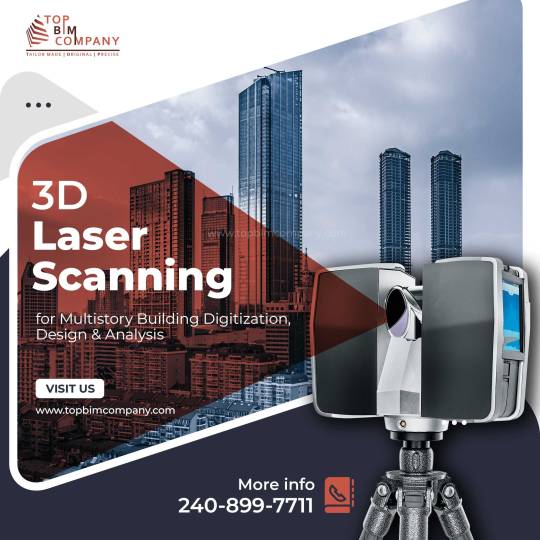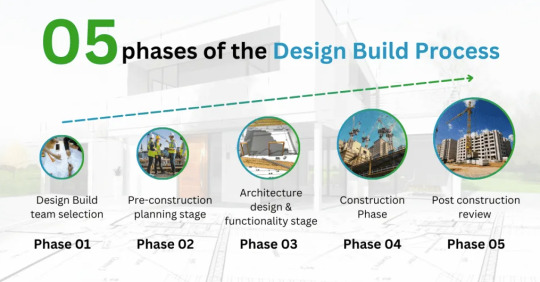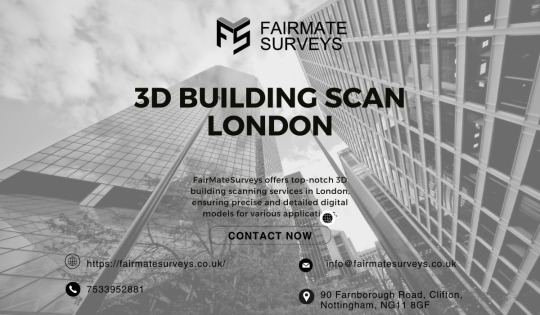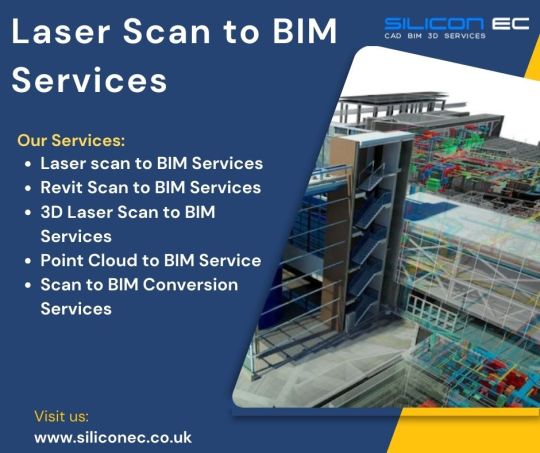#3d building scanning
Explore tagged Tumblr posts
Text
Exploring the World of 3D Building Scanning with Precision and Detail

This 3D building scanning technology is highly reliant on high-tech laser scanners. Within minutes, such a device can scan millions of points, providing a point cloud to represent each view of the structure being scanned. That is why data captured through it is comprehensive to ensure nothing, no matter how minute or intricate an element is, is omitted, thus making it highly essential for architects, engineers, and construction specialists.
More Info: https://www.knockinglive.com/exploring-the-world-of-3d-building-scanning-with-precision-and-detail/
0 notes
Text
#construction#architectural design#building design#laser scanning#3d laser scanning#as built documenation#as built drawing#3d building scanning
0 notes
Text

3D Building Scanning in Vietnam
Scanning a building is the job that must be done by professionals. We offer professional 3D building scanning in Vietnam and we ask for reasonable price to offer such service. While offering 3D building scanning in Vietnam service, we never keep any hidden fee.
0 notes
Photo

3D laser scanning is a method of collecting extremely fine and correct information about a construction area using laser rays. A laser beam assesses the structure’s numerous dimensions, including the length, width, and height of the construction elements, and also their connections to each other.
The point cloud image created by the 3D laser scanning precisely copies the scanned objects. Based on the make and type of the 3D scanner, it could be used up to a distance of many meters. The information obtained can subsequently be utilized to construct 2D CAD drawings or 3D Revit BIM models using Building Information Modeling (BIM) and Computer-Aided Drawing (CAD) tools.
#3D laser scanning#Laser Surveying#LiDAR Scanning#3d building scanning#2D CAD drawings#3D Revit BIM models
0 notes
Text

Building Information modeling (BIM) is an clever software program modeling procedure that engineers, contractors, and designers can use to collaborate on a building’s layout, construction, and operation. It’s extra than just a version. It’s a method of gathering and handling facts at some stage in a building’s whole existence cycle.
BIM encompasses not simplest geometry and spatial relationships, however it also files constructing features, together with unique statistics about the sort of materials used, the quantity used, and the way the ones characteristics effect the building as a whole. BIM may be thought of as a database of facts ranging from task substances and cost – to the 3D version after construction – to operation of the facility. This records may be used to actively control a task each step of the way.
2 notes
·
View notes
Text
Top Reasons to Use BIM for Architectural Project Management

Managing architectural projects has become so much easier with the benefits of BIM (Building Information Modeling). This amazing technology changes how designs and construction are handled, making it simpler for architects, engineers, and others to work together and get things done efficiently. Let’s take a look at why BIM is so useful and how it is helping projects in real life.
1. Better Teamwork and Communication
BIM makes it simple for everyone involved in a project to stay connected. Architects, engineers, contractors, and clients can have access simultaneously to the same information with a common 3D digital model. This helps avoid misunderstandings and speeds up the decision-making process.
For example, using architectural BIM services means everyone is working with the same details, which helps prevent mistakes and the need for do-overs. Plus, this kind of teamwork builds stronger relationships between the teams and delivers better results.
2. Accurate Designs and Easy Visualization
The BIM offers the creation of precise 3D digital models that allow architects to view their designs before construction begins and help catch design problems earlier in the process.
With tools like Revit BIM also lets architects simulate real-world conditions like lighting and materials. This way, they can make sure their designs look great and work well. Further, this gives the project better understanding by the client, reducing the period of approvals.
3. Saves Time and Money
Old construction methods often led to unexpected costs and delays because of mistakes or poor communication. BIM fixes that by keeping all project details in one model. Tools like clash detection ensure that things like MEP services do not interfere with other parts of the design.
By catching these issues early, you avoid delays and minimize waste. Projects finish faster, and you save on costs. If you are curious about how BIM can save time and money for your projects, reach out to the BIM experts at SmartCADD.
4. Smooth Handling of MEP Services
Dealing with MEP services (Mechanical, Electrical, and Plumbing) can be tricky, but BIM makes it seamless. These systems fit perfectly into the design, so there is no need for last minute fixes during construction.
With tools like Scan to BIM, architects can also include existing structures in their designs. This is especially beneficial for projects involving heritage buildings that need careful planning.
5. Helps with Sustainable and Green Designs
Eco-friendly designs are a big deal these days, and BIM plays a key role in creating them. It helps architects analyze things like sunlight, ventilation, and material use to design energy efficient buildings.
By using architectural BIM services, you can ensure your projects meet energy-saving standards and are environmentally friendly. This benefits not just the planet but also increases the long-term value of your buildings.
6. Makes Building Management Easier
The benefits of BIM do not stop when construction is done. The 3D digital model becomes a handy tool for managing the building later. Owners can use it to keep track of maintenance, energy use, and even future renovations.
Utilizing this approach keeps buildings well-maintained for many years, making BIM an essential part of modern project management.
7. Restoring Heritage Buildings
Restoring heritage buildings is challenging because it requires to balance preserving history with making modern updates. With Scan to BIM, architects can create accurate digital models of old buildings. This helps them plan the renovation without losing the original spirit of the building.
This technology ensures these historic sites stay beautiful and functional for future generations.
8. Handles Big and Complex Projects
Bigger projects mean more challenges, but BIM makes the process easier. It can handle huge amounts of data and complicated designs all in one place.
Whether you are working on a small home or a massive infrastructure project, BIM keeps everything organized and efficient.
9. Reduces Risks and Improves Safety
Safety is always important on construction sites. With BIM, you can spot safety risks early on. For example, clash detection tools catch problems in MEP services or structural designs that could lead to accidents.
BIM also helps teams plan out construction steps safely, reducing on-site accidents and keeping everyone safe.
10. Works with New Technologies
BIM connects easily with tech like Virtual Reality (VR) and Augmented Reality (AR). These tools let clients and teams walk through designs virtually and provide feedback before construction starts.
BIM also works with IoT (Internet of Things) devices, letting you monitor building performance in real time. This adds even more value to your projects.
Why Choose BIM?
Today, using BIM is a must for managing architectural projects. It helps teams work together, cuts costs, improves designs, and supports eco-friendly practices.
Want to learn more? Visit SmartCADD. We specialize in architectural BIM services and can help your projects run smoothly.
By including Building Information Modeling in your work, you are not just managing projects, you are shaping the future of design. Give BIM a try and see the difference it makes.
#building information modeling#3D models#architectural BIM services#Revit BIM#MEP services#Scan to BIM#heritage buildings#BIM technology#MEP coordination#project management
0 notes
Text
The Transformative Power Of 3D Laser Scanning In Construction And Preservation
In the realm of architecture, construction, and preservation, 3D laser scanning has emerged as a groundbreaking technology, redefining the way projects are planned, executed, and managed. By offering unparalleled precision and detail, this technology has become indispensable for professionals across various industries.
Benefits Of 3D Laser Scanning For Buildings
3D Laser Scanning for Buildings provides highly accurate measurements and digital models, streamlining processes such as design, renovation, and facility management. Capturing precise spatial data eliminates errors and ensures projects are completed with maximum efficiency. Architects and engineers benefit from detailed visualizations that help identify potential challenges before construction begins, saving both time and costs.
Preserving Heritage With 3D Laser Scanning
When it comes to preserving history, 3D Laser Scanning for Historic Buildings plays a pivotal role. This technology captures intricate details of heritage structures, creating accurate digital replicas. These models are vital for restoration projects, allowing experts to maintain structural integrity and authenticity. Additionally, it provides a permanent digital record, ensuring that historic landmarks can be preserved for future generations, even in the face of natural disasters or aging.
Enhancing Construction Projects
3D Laser Scanning Construction transforms the construction industry by improving accuracy and efficiency. It aids in creating detailed site surveys, ensuring proper alignment and integration of new structures with existing environments. From project planning to execution, this technology minimizes risks, enhances collaboration, and ensures adherence to project timelines.
Why Choose PMC For 3D Laser Scanning Services?
PMC (Production Modeling Corporation) stands as a leader in providing advanced 3D laser scanning solutions. With decades of experience and a commitment to innovation, PMC delivers precise digital models for buildings, historic landmarks, and construction projects. Their expertise spans across industries, making them a trusted partner for businesses and preservationists alike.
PMC’s services include reality capture, CAD drafting, and BIM integration, ensuring comprehensive solutions for clients. Whether it’s 3D Laser Scanning for Buildings, 3D Laser Scanning for Historic Buildings, or 3D Laser Scanning Construction, PMC leverages cutting-edge technology to meet unique project requirements. Their dedication to quality and customer satisfaction sets them apart, ensuring successful outcomes every time.
For businesses or organizations seeking reliable and innovative scanning solutions, PMC offers the perfect blend of expertise and technology. By choosing PMC, you’re not only investing in superior results but also a trusted partner committed to your project’s success.
#3D Laser Scanning for Buildings#3D Laser Scanning#3D Laser Scanning for Historic Buildings#3D Laser Scanning Construction#PMC#Production Modeling Corporation
1 note
·
View note
Text

The design-build process is a streamlined approach to construction that combines architectural design and construction services under a single contract. It typically involves five distinct phases.
Design-Build Team Selection The initial phase centers on identifying the most suitable team to bring a project to fruition. This involves clearly defining project goals and needs, issuing a Request for Proposals (RFP) to qualified design-build firms, and meticulously evaluating proposals to select the optimal team. Establishing clear contractual terms and project parameters is crucial during this stage.
Pre-construction Planning Once the design-build team is in place, comprehensive pre-construction planning commences. This phase involves developing a detailed project scope and budget, conducting thorough site investigations, and identifying potential risks to develop mitigation strategies. Creating a realistic project schedule, allocating necessary resources, and planning for material and subcontractor procurement are also essential components of this stage.
Architecture Design and Functionality This phase is dedicated to transforming conceptual ideas into tangible architectural designs. The design team iteratively refines the project's aesthetic appeal and functional requirements, ensuring seamless integration of building systems. Adhering to building codes and obtaining necessary permits are critical during this stage, as are the production of detailed construction documents.
Construction Phase With designs finalized, the construction phase commences. The design-build team mobilizes on-site, preparing the ground for construction management. The actual building process, including installation of various systems, takes place during this phase. Rigorous quality control measures and inspections are implemented to ensure adherence to project standards. Effective project management and coordination are indispensable for the successful execution of this phase.
Post Construction Review Upon project completion, a comprehensive review is conducted. This involves final inspections, official handover of the project to the owner, and meticulous documentation of project records, including as-built drawings and warranty information. The final stage also includes a thorough evaluation of the entire project to identify lessons learned for future endeavors.
All construction projects require careful planning to succeed. You need to find the right resources and equipment, determine the timeline and budget, and meet various other complex requirements.
0 notes
Text
Preserving Indian Architectural Marvels through Laser Scanning Techniques
Laser scanning technology is revolutionizing the renovation and preservation of India's historic architectural buildings. This solution offers precise documentation, informed decision-making, minimized invasive interventions, and enhanced collaboration - enabling restoration teams to safeguard India's rich cultural legacy with the utmost care and respect for the original design.

0 notes
Text
Accuracy and Effectiveness Using Surveys and Laser Scanning

3D laser scanning surveying has one major benefit in that it can offer exact, detailed data for informed decision-making. Architects, engineers, and designers depend on this information to create accurate blueprints and models, so greatly enhancing the results of projects. For difficult projects needing exact planning, its speed and accuracy make it a recommended tool.
Visit Us: https://heyjinni.com/read-blog/186905_accuracy-and-effectiveness-using-surveys-and-laser-scanning.html
#laser scanning surveying#measured building survey london#laser scanning and surveying#3d laser scanning service
0 notes
Text
Vertebrate 3D scan project opens collections to all - Technology Org
New Post has been published on https://thedigitalinsider.com/vertebrate-3d-scan-project-opens-collections-to-all-technology-org/
Vertebrate 3D scan project opens collections to all - Technology Org
A venture to digitize vertebrate collections in museums and make them freely available online for anyone to access has reached a milestone. The project has created 3D CT scans of some 13,000 specimens, representing more than half the genera of birds, amphibians, reptiles, fishes and mammals.
Lateral view of piranha (Serrasalmus iridopsis); collected in South America, by C. F. Hartt who died in 1878. The exact year of collection is not known, but was likely in the latter half of the 19th century.
The project, the oVert (openVertebrate) Thematic Collection Network, has just wrapped up a four-year, $2.5 million National Science Foundation grant, with the efforts to date described in a paper published in BioScience.
The Cornell Museum of Vertebrates, one of 18 institutions taking part in oVert, has uploaded roughly 500 CT scans of specimens from its collections. The museum holds approximately 1.3 million fish specimens, 27,000 reptiles and amphibians (collectively called herps), 57,000 birds and 23,000 mammal specimens.
“Not everyone is interested in making a trip to a museum, so by digitizing specimens, placing everything up on a website and making it free, anyone who wants to access it can without having to leave the house, which allows for much more equitable access,” said Casey Dillman, curator of fishes and herps at the Cornell Museum of Vertebrates in the College of Agriculture and Life Sciences, and a co-author of the Bioscience paper.
So far, users have included artists, high school and college students, educators and scientists.
oVert allows the natural history collections that are represented to be used in collaborative ways, such as in classrooms. The format has made it simpler to compare anatomies of different species.
“You can do so many things,” Dillman said. “You can compare specimens and look at the evolution of limbs, or wings in birds and bats, or gills in fishes.”
Views of a juvenile pied-billed grebe (Podilymbus podiceps) that perished swallowing a fish.
One limitation of the platform is that each specimen dataset can be 2 to 3 gigabytes in size, requiring users to have access to a computer with an expensive graphics processor to visualize the data. “Not everyone’s laptop can do that,” Dillman said.
Dorsal view of a shovelnose sturgeon (Scaphirhynchus platorynchus); one of the three species of shovelnose sturgeon in the U.S. The other two species are federally endangered. This specimen was collected in 1909 in Emanuel Creek at Springfield, South Dakota. Image credit: Cornell University Museum of Vertebrates
The idea behind the grant was to CT scan one species of every genus of vertebrate, thereby building an online digital library of each organism’s appearance – its phenotype, or observable characteristics – with respect to the skeletal anatomy. While most of the images are skeletons, some were stained with a special solution to provide better contrast and visualize soft tissues, such as skin and muscles. The scanners use X-rays, which can be set as weak as a medical X-ray for soft tissue, or strong enough to view through rocks and fossils.
Museum catalog numbers included with each image link to the institutional database where the specimen originated. Database entries include when, where and by whom a specimen was collected.
Lateral view of a sargassum fish (Histrio histrio); collected from the south shore of Boca Chica Bay in Monroe County, Florida, in 1979. Image credit: Cornell University Museum of Vertebrates
In many ways, the oVert project is just getting started, Dillman said. “Thirteen thousand species isn’t even scratching the surface of vertebrate diversity,” he said.
For example, there are more than 36,000 species of fishes alone; one species per genus is a good start, he said, but it will take time and additional funds to represent the great depth of diversity.
“If you think about some of the fish lineages in North America, there might be 200 species within a genus,” he said.
Each round of funding will allow the teams to continue representing more genera and adding more species from each genus.
The grant’s principal investigator was David Blackburn, curator of herpetology at the Florida Museum of Natural History in Gainesville, Florida.
Source: Cornell University
You can offer your link to a page which is relevant to the topic of this post.
#000#3d#3D scanning#agriculture#America#amphibians#Anatomy#artists#bats#birds#Building#collaborative#Collections#college#computer#data#Database#digital library#diversity#Evolution#fish#Fossils#Foundation#Funding#graphics#History#images#it#laptop#life
0 notes
Text

Unveiling London's Majesty: 3D Building Scans Illuminate Architectural Splendor
Embark on a captivating journey through London's architectural wonders with cutting-edge 3D building scans! Witness the intricate details and timeless beauty of iconic landmarks like Big Ben, Buckingham Palace, and Tower Bridge like never before. Explore the city's rich history and marvel at its stunning skyline in immersive 3D. Join us in discovering the magic of London's architecture through state-of-the-art technology!
0 notes
Text
#construction#3dmodeling#3d laser scanning#building#building design#blog#branding#microblog#technology
0 notes
Text
Improvement of Building Information Modeling in Egyptian Construction Projects
Introduction to Building Information Modeling (BIM)
Building Information Modeling (BIM) is a digital representation of physical and functional traits of a facility. From layout to production and beyond, BIM allows stakeholders manipulate data and methods collaboratively, enhancing accuracy and reducing inefficiencies.
Importance of BIM within the Construction Industry
BIM is critical to the development enterprise as it allows efficient making plans, design, and production methods. By visualizing every aspect of a building in a 3-D version, stakeholders could make better selections, lessen mistakes, and ensure extra success results.
Current BIM Adoption in Egypt
Overview of BIM Usage in Egyptian Projects
Though BIM is widely recognized globally, its adoption in Egypt has been gradual. Large projects, which include industrial complexes and infrastructure, have begun to integrate BIM to enhance challenge planning and execution.
Key Challenges in Egyptian BIM Adoption
Despite the advantages, Egypt faces several limitations in BIM adoption, along with limited know-how, high preliminary fees, and the absence of standardized practices. Addressing these demanding situations is vital for wider implementation.
Benefits of BIM for Egyptian Construction Projects
Enhanced Collaboration
BIM fosters a collaborative environment wherein architects, engineers, and construction groups paintings collectively seamlessly. This collaboration reduces miscommunications and permits all and sundry to stay updated on task modifications in real-time.
Cost and Time Efficiency
By minimizing design mistakes and optimizing workflows, BIM allows storage of both money and time. The potential to simulate specific layout situations permits stakeholders to make value-effective decisions early in the challenge lifecycle.
he Impact of AI and Automation on BIM
The integration of Artificial Intelligence (AI) and automation with BIM holds great promise for enhancing project outcomes. As AI technologies advance, they will enable predictive modeling, risk identification, and optimized resource allocation, revolutionizing the management of construction projects in Egypt.
Conclusion
Building Information Modeling (BIM) offers transformative potential for the Egyptian construction industry. Despite existing challenges, with targeted improvements in training, technology, and policy support, BIM can become a standard practice across Egypt’s construction sector. Embracing BIM will lead to better collaboration, cost reductions, and optimized project outcomes, driving the industry’s growth and innovation.
0 notes
Text
Get the Best Laser Scan to BIM Services in Bristol, UK

Silicon EC UK Limited offers comprehensive Laser Scan to BIM Services in Bristol, UK, catering to the evolving needs of the construction and architectural industries. Our experienced team of engineers and BIM specialists transforms raw scan data into intelligent 3D models, seamlessly integrating them into the BIM environment. Our team of experienced professionals utilizes state-of-the-art equipment to conduct comprehensive laser scans, generating highly detailed point clouds that serve as the foundation for creating accurate 3D models. Our services empower clients to streamline project planning, enhance construction coordination, and minimize errors, ultimately leading to improved project outcomes and cost savings. Our commitment to excellence, combined with a collaborative approach, ensures seamless communication and transparency at every stage of the BIM project.
Supports and software facility:
Our dedicated workforce comprises steadfast QC heads, proficient Team Leads, and experienced Engineers who possess extensive expertise. Our BIM Services adeptly utilize cutting-edge software, including AutoCAD, Tekla Structure, and Revit Structure, showcasing a commitment to staying at the forefront of technological advancements.
We are a BIM Engineering Company that presents BIM Engineering Services Bristol and other cities covering London, Liverpool, Manchester, York, Leeds-Bradford, Glasgow, Newcastle, Sheffield, and Sunderland.
Choose Silicon EC UK Limited for comprehensive Laser Scan to BIM Services in Bristol, UK, and experience the difference in precision, reliability, and innovation for your next Building project.
For More Details Visit our Website:
#Laser Scan to BIM Services#Revit Scan to BIM Services#3D Laser Scan to BIM Services#Point Cloud to BIM Service#Scan to BIM Conversion Services#Scan to BIM Services#BIM Services#Building Information Modeling Services#Building Information Modeling#BIM#BIM Services Bristol#BIM Engineering Services UK#BIM Services UK#Laser Scan to BIM Services Bristol#Scan to BIM Services UK#CAD Design#CAD Drafting#CAD Drawing#Engineering Services#Engineering Company#Engineering Firm
0 notes
Text
Discover how Scan-to-BIM modeling transforms the construction process by improving accuracy and efficiency. Learn how this cutting-edge technology converts laser-scanned data into detailed 3D models, enabling better project visualization, clash detection, and seamless collaboration across design and construction teams.
#3D Laser Scanning#3D Scan to BIM#BIM Modeling#BIM Technology#Building Information Modeling#Scan to BIM#scan to bim services
1 note
·
View note